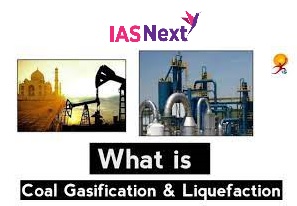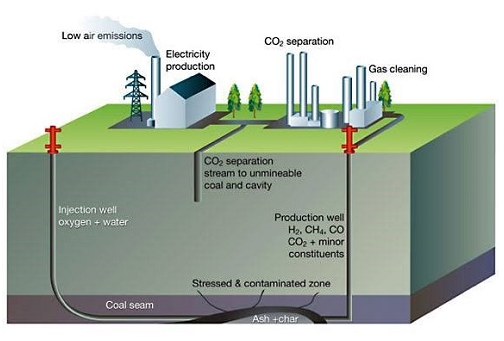CURRENT AFFAIRS
Get the most updated and recent current affair content on Padhaikaro.com
Coal Gasification and Liquefaction
- IAS NEXT, Lucknow
- 07, Feb 2022

Reference News:-
In its endeavour to reduce emissions and control dependence on crude oil, the Centre has said four coal gasification plants will be set up on a pilot basis to understand the technical and financial viability of such projects.

Significance:
India is committed to cut consumption of coal, a primary pollutant, in power plants to half by 2030 and reduce its overall carbon footprint. Coal gasification is considered a greener alternative to burning the fossil fuel in furnaces.
What is coal gasification?
It is the process of producing syngas, a mixture consisting carbon monoxide (CO), hydrogen (H2), carbon dioxide (CO2), natural gas (CH4), and water vapour (H2O).
- During gasification, coal is blown with oxygen and steam while also being heated under high pressure. During the reaction, oxygen and water molecules oxidize the coal and produce syngas.
Benefits of gasification:
- Transporting gas is a lot cheaper than transporting coal.
- Help address local pollution problems.
- Has greater efficiency than conventional coal-burning because it can effectively use the gases twice: the coal gases are first cleansed of impurities and fired in a turbine to generate electricity. The exhaust heat from the gas turbine can be captured and used to generate steam for a steam turbine-generator.
Concerns and challenges:
Coal gasification is one of the more water-intensive forms of energy production.
There are also concerns about water contamination, land subsidence and disposing of waste water safely.
What is coal liquefaction?
Also called Coal to Liquid (CTL) technology, it is an alternative route to produce diesel and gasoline and makes economic sense only in a world of high crude oil prices.
- The process involves gasification of coal, which in turn will produce synthetic gas (a mix of CO+H2). The synthetic gas can be liquefied to its fuel equivalent in presence of cobalt/iron-based catalysts at higher pressure and temperature.
- However, liquefied coal emits twice as much CO2 as burning oil. It also emits a large volume of SO2.
Benefits of liquefaction:
The CO2 emissions are more readily and cheaply captured from CTL plants than from conventional coal-fired power stations. The captured CO2 can be transported and injected into underground storage reservoirs (a procedure known as “carbon capture and storage”—CCS—or “geosequestration”).